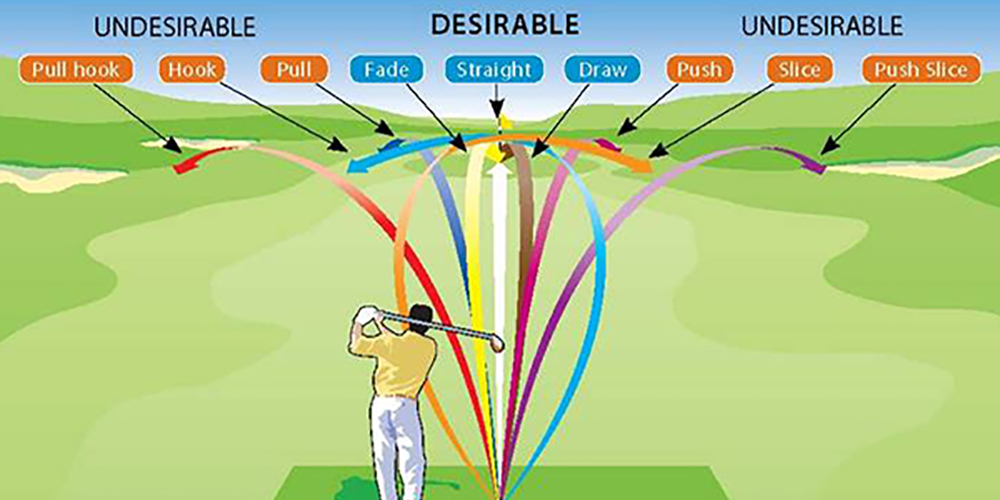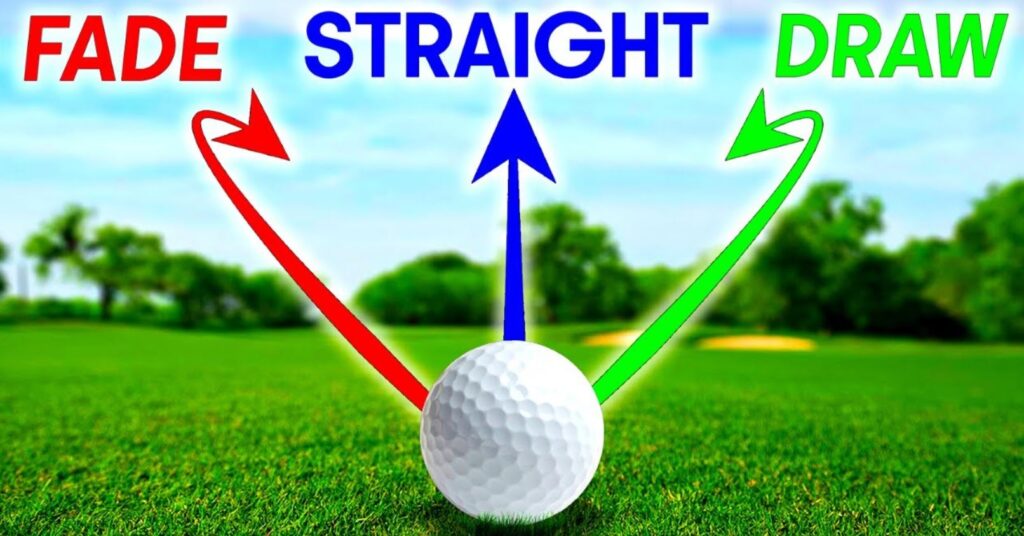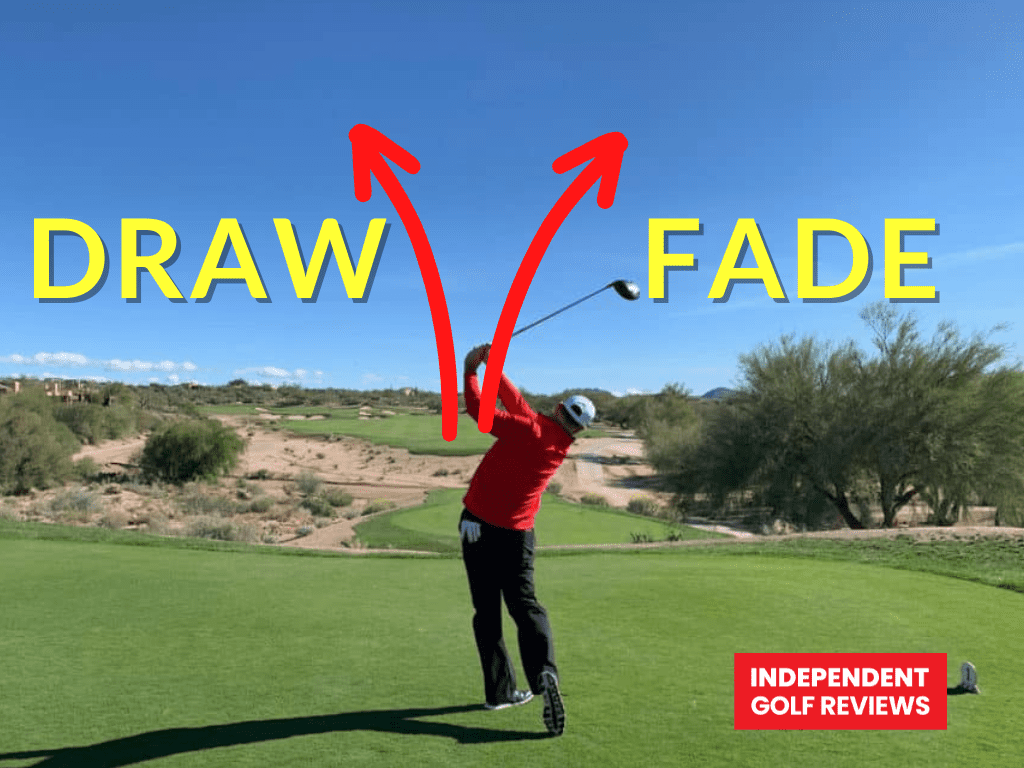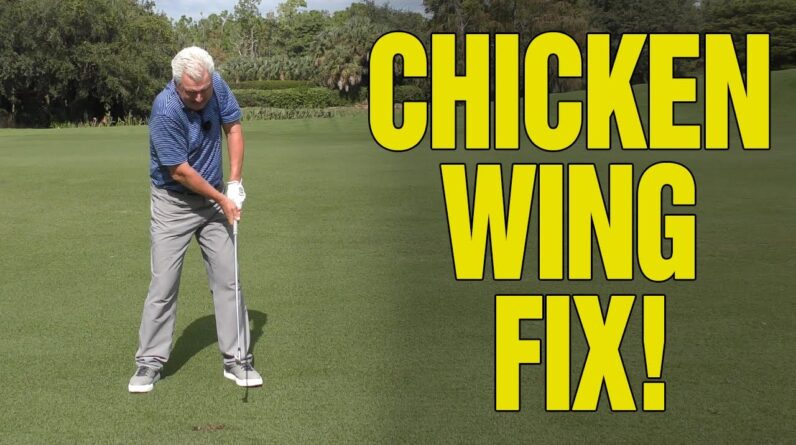If you’ve ever found yourself on the golf course, you’ve probably heard the terms “draw” and “fade” being thrown around by fellow players or commentators. But what do these terms actually mean, and more importantly, what’s the difference between the two? While both shots involve a slight curve in the ball’s flight path, it all comes down to the direction and movement of the curve. A draw refers to a shot that curves from the right to the left (for a right-handed player), while a fade is the exact opposite, curving from left to right. Understanding these differences can not only improve your golf game, but also help you appreciate the nuances and strategies of the sport. So, read on to unlock the secrets of the draw and the fade, and take your golf skills to the next level!
What’s The Difference Between A Draw And A Fade?

Definition of Draw and Fade
In the world of golf, “draw” and “fade” are terms used to describe the way a golf ball curves in the air during its flight. Both are shots that intentionally alter the ball’s trajectory and are commonly used by golfers to navigate their way around the course.
A draw refers to a shot that starts to the right of the target (for a right-handed golfer) and gently curves back to the left. On the other hand, a fade is a shot that starts to the left of the target and curves to the right. Understanding these terms and being able to execute them can immensely improve your golf game.
Ball Flight
The primary difference between a draw and a fade lies in the direction and curvature of the ball’s flight path. With a draw, the ball will initially move away from your target line before bending back towards it, creating a curve from right to left (for right-handed golfers).
Conversely, a fade will initially move in the opposite direction, away from your target line to the left, before gracefully curving back to the right. Understanding the ball flight pattern of each shot is crucial in selecting the right shot for specific situations on the golf course.
Shot Shape
The shot shape refers to the visible trajectory of the ball as it travels through the air. When executing a draw, the golfer can expect to see a right-to-left curve for right-handed golfers, resulting in a shot that appears to arc in the air. This shot shape not only helps golfers to navigate around obstacles but also adds distance to their shots due to the increased roll.
In contrast, a fade will produce a left-to-right curve for right-handed golfers. This shot shape is often gentler and more controlled than a draw, allowing golfers to precisely position their shots on the fairway or greens. While a fade may sacrifice some distance, the added accuracy can be vital in avoiding hazards or putting your ball in an advantageous position.
Effect on Distance
The effect on distance between a draw and a fade can vary depending on a golfer’s swing technique and the specific circumstances. In general, a well-executed draw shot tends to result in more distance due to the addition of roll once the ball lands. This extra roll can result in significant gains off the tee or when hitting approach shots into the green.
On the other hand, a fade shot may sacrifice some distance due to the lateral movement of the ball. Since the fade curves from left to right (for right-handed golfers), it may result in less roll, and therefore, less overall distance. However, it is worth noting that skilled golfers can still achieve impressive distances with a fade, and the trade-off in accuracy can often make it a preferred choice in certain situations.

Causes
Understanding the causes behind a draw or a fade can help you determine the adjustments needed to execute each shot effectively. The primary factors influencing a draw or a fade are your grip, alignment, club path, face angle, and swing path.
Grip
The way you hold the club can significantly influence the outcome of your shot shape. To promote a draw shot, you’ll generally want to have a slightly stronger grip, with your hands rotated more to the right on the club handle (for right-handed golfers). This grip helps to close the clubface slightly at impact, producing the desired right-to-left ball flight.
Conversely, a fade is often achieved with a slightly weaker grip, where the hands are rotated slightly to the left (for right-handed golfers). This grip position helps to open the clubface slightly at impact, resulting in the left-to-right ball flight usually associated with a fade.

Alignment
Proper alignment is crucial for consistent shot shape. To execute a draw effectively, align your body slightly to the right of the target (for right-handed golfers). This alignment compensates for the ball’s initial movement to the right before it curves back left, ensuring the ball ends up on your intended target line.
For a fade, your body should be aligned slightly to the left of the target (right-handed golfers). This alignment compensates for the ball’s initial leftward movement, allowing it to curve back right and ultimately finish on your desired target line.
Club Path
The club’s path during the swing plays a significant role in the shot shape. To achieve a draw, the club’s path should come from slightly inside the target line on the downswing, promoting an inside-out swing path. This swing path encourages the ball’s right-to-left curve.
In contrast, when aiming for a fade, the club’s path should approach the ball from the outside-in, promoting an outside-in swing path. This swing path encourages the ball to curve gently from left to right.

Face Angle
The face angle refers to the position of the clubface relative to the target line at impact. When attempting a draw, you will want the clubface slightly closed at impact (aimed more to the right for right-handed golfers). This closed clubface promotes the right-to-left spin necessary for the draw shot.
For a fade, you will want the clubface slightly open at impact (aimed more to the left for right-handed golfers). This open clubface encourages the left-to-right spin desired for the fade shot.
Swing Path
Apart from the club’s path, your swing path also plays a crucial role in shot shape. To achieve a draw, your swing path should be more from the inside-out. This means that the club should approach the ball on a slight in-to-out arc, promoting the right-to-left ball flight.
Conversely, a fade is achieved through a swing path that’s more from the outside-in. This swing path sends the club on a slight out-to-in arc, promoting the left-to-right ball flight associated with a fade shot.

Shot Corrections
Knowing how to correct a draw or a fade shot can help you adjust your shot shape when necessary. If you find that your shots are overdrawn or hooking too much, adjusting your grip to a slightly weaker position, or focusing on an improved club path can help reduce the draw and produce straighter shots.
Similarly, if you find that your shots are slicing excessively or not producing the desired fade, you can adjust your grip to a slightly stronger position or work on improving your swing and club path to prevent the ball from curving too much from left to right.
By understanding the differences between a draw and a fade and how to execute them effectively, you can add versatility and control to your golf game. Experimenting with these shot shapes and working on the necessary adjustments will allow you to navigate the course with confidence and tackle challenges head-on. So, grab your clubs and start practicing these shots to take your game to the next level!






